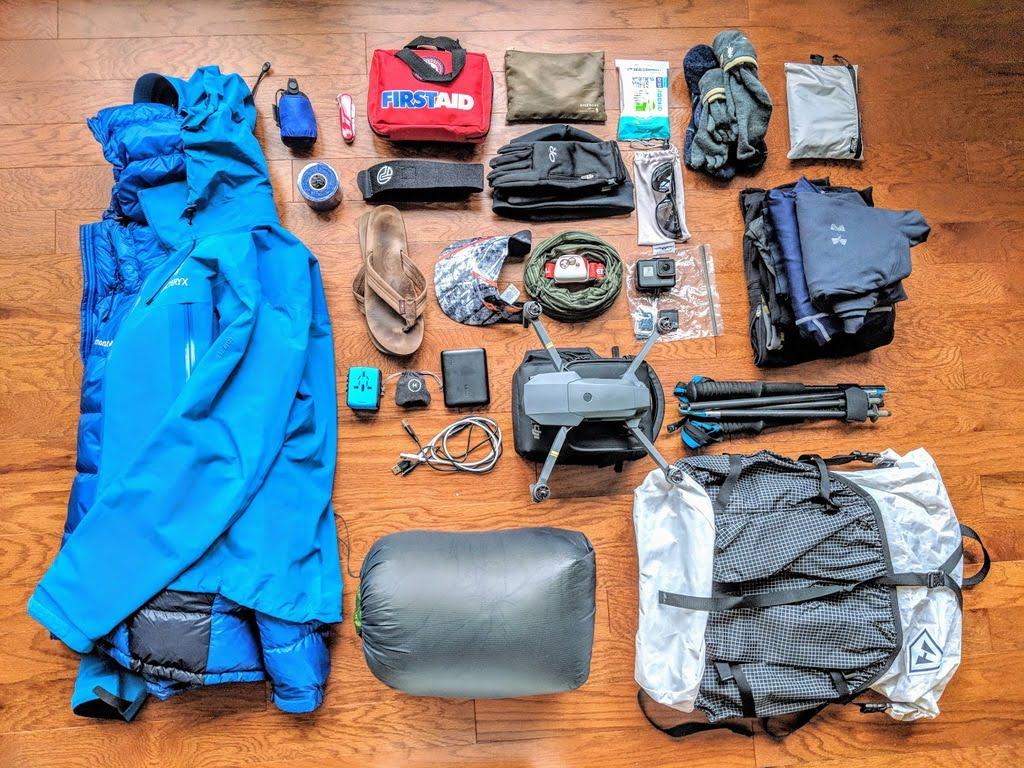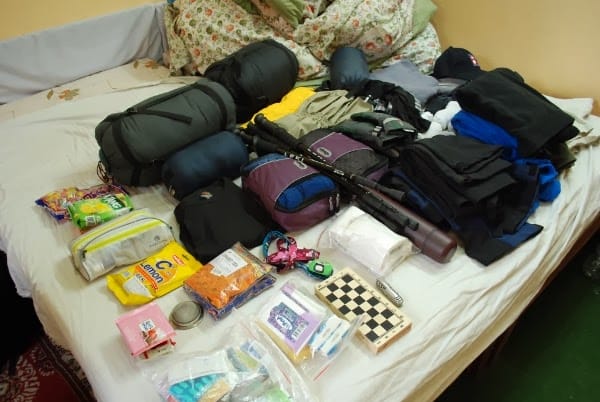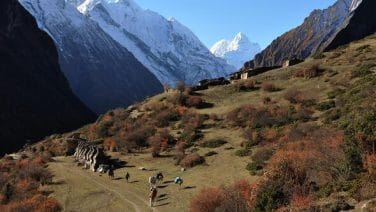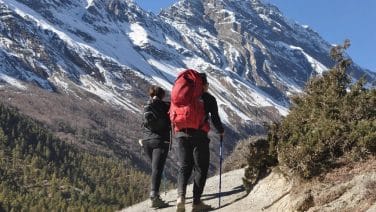TL;DR:
- Prepare for trekking in Nepal using layered clothing: base layer (synthetic or merino wool for sweat absorption), mid-layer (fleece or down for heat retention), and outer layer (waterproof, windproof materials for protection against elements).
- Essential trekking gear includes a quality backpack, sturdy boots with ankle support, two sets of gloves (one for intense cold, another that’s wind and waterproof), and protective headgear for sunlight and frostbite.
- Rapid climate change in Nepal treks dictates adaptable clothing that accommodates various scenarios and weather forecasts.
- Dressing for high-altitude treks requires special gear, including crampons, ice axes, down jackets, durable gloves, and high-quality sleeping bags.
- Hydration and dermatological precautions, such as high SPF sunscreen, brimmed hats, sunglasses, moisturizers, and lip balm, are essential.
- Dressing for different treks requires specific attire. e.g., light yet protective clothes for Nagarkot, layered clothing for Pokhara, and insulation gear for Everest base camp.
- Packing should be light and manageable, with preparations focused on climate factors and maintaining body temperature through strategic dressing. Physical readiness through stamina building is also key.
Trekking in Nepal? The Himalayas await your bravest endeavor, but first, let’s talk gear. Knowing what to wear in Nepal can make your trek less taxing and more thrilling. Whether you’re in April’s mildness or November’s nippiness, your attire can make all the difference. Welcome to your definitive, down-to-earth guide — “What to Wear Trekking Nepal? A Complete Outfit Guide”. Embark this journey with us in exploring the right trekking attire, outdoor clothing, and essential gear for a memorable Himalayan adventure.
Table of Contents
What Should You Wear for Trekking in Nepal?
Setting out for a trek in Nepal? With the rugged trails awaiting and the Himalayas as the backdrop, it is vital to ensure your trekking attire is ready. Now, you might wonder – what exactly is the ideal “trekking attire for Nepal”?
How to Choose the Right Outdoor Clothing for Trekking in Nepal?
When prepping for your outdoor clothing in Nepal, remember one rule – layer! Yes, gear up with layers. The key is to manage body heat as you ascend or descend in altitude, encountering varied climates. Your clothing should include a base layer, a mid-layer, and an outer layer, each serving a unique purpose.
The base layer should hug your body and absorb sweat. Merino wool or synthetic blends work best. Avoid cotton as it tends to retain moisture. Your first layer should have items like synthetic underwear, thermal shirts, and slim socks.
Now, the mid-layer’s function is to retain body warmth without holding back your action-packed trek. Materials that work best include fleece and down, for pieces like trekking pants, sports tops, a fleece jacket, and a down jacket.
The outer layer is your shield against the weather – rain or wind, the layer should guard you. Go for waterproof and windproof materials. This layer should comprise items like a rain jacket, waterproof pants, a sunhat, polarized sunglasses, and waterproof thermal gloves.
But that’s not all. Consider your downtime outfits as well. It’s essential to stay comfortable at the end of an exhausting day. Pack some sneakers, thermal socks, a fleece, a pair of sweatpants, and a beanie to wear while you take a rest!
What is the Essential Trekking Gear for Nepal?
Now that your attire is ready, it’s time to focus on the right kind of gear too. Don’t forget a good quality trekking backpack to carry your essentials!
As for your feet, go for shoes with good ankle support, considering the uneven terrain you’d encounter. Gloves are another crucial element in your gear list – keep two sets, one for intense cold and another pair that is water and windproof.
Lastly, your headgear also plays a crucial role in protecting you from sunburn or frostbite. A hat with a wide brim is excellent for sunny days, while a knit cap or a balaclava is best for the chilling weather.
Why is Trekking Attire for Nepal Different from Other Places?
Trekking in Nepal is one-of-a-kind – dramatic climbs, chilling descents, and unpredictable weather. Hence, your “Nepal trekking apparel guide” needs to account for these variations. Above everything, this clothing strategy allows you to add or remove layers based on the current temperature and your comfort, ensuring a more successful and enjoyable trek in this stunning Himalayan kingdom.
Now that you are equipped with this guide, get set to embark on your adventure. Prepare your gear, watch weather forecasts, and ensure your layered clothing fits right. Happy Trekking in Nepal!
How Does Season Matter When Dressing for a Trek in Nepal?
Thinking about your next adventure? If the towering peaks and stunning landscapes of Nepal clinched the deal, good for you! But the crucial bit here is knowing how the season and climate can play a role in your trek, specifically, in what you wear.
What to Wear for a Nepal Trek in November?
Drawing from my trips, I’ll start with November. When planning your Nepal trek November clothing, remember that the weather tends to be cool – think not too hot days and chilly nights. I find that base layers of merino wool or synthetic blends work well as they wick away sweat. Adding a mid-layer made of fleece or down helps keep your body heat trapped. Do carry a waterproof and windproof outer layer for weather changes or higher altitudes. Cotton clothes? A strict no-no. They don’t dry quickly and can make you feel colder.
How Can You Adapt Your Clothing to Different Trekking Scenarios in Nepal?
Adaptability is key when it comes to seasonal trekking gear in Nepal. Experiencing different trekking scenarios in a single day isn’t unheard of. The outfits that worked in the lush, temperate farmlands won’t hold up in the chilly alpine landscapes or the icy mountain peaks.
I always have my three-layered clothing ready – base, mid, and outer. All three are important, but I can remove or add layers based on where I am.
How Does Weather Influence Your Dressing for a Trek in Nepal?
The weather holds the reins when it comes to deciding what to wear. I always check the weather forecast before packing. It helps me prep for not only what I wear while trekking but also what I wear during my downtime and sleeping.
Nights can get chilly, so I ensure that I have thermal socks, a long-sleeved fleece, sweatpants, and a beanie for the end of the day.
Understanding weather and its influence on layering can make a big difference in your comfort, overall experience, and even safety during your Nepal trek.
In essence, season and weather greatly influence your Nepal trek apparel choices. With the right know-how, you can deal with the rapidly changing Nepal climate without breaking a sweat or catching a chill! So, go ahead, pack smart, and let the magic of Nepal’s diverse landscapes do the rest. Trust me, you’ll thank me later for these tidbits when you’re savoring the view from atop the peak!
What Should Be Considered When Selecting Fabrics and Footwear for a Nepal Trek?
The right fabrics and footwear could make the difference between a thrilling trek and an uncomfortable ordeal. In Nepal, treks like Everest Base Camp or Annapurna Circuit can take you through a range of climates and terrains in a single day, which means layering is key.
How to Choose Fabrics for Your Trekking Attire in Nepal?
When choosing fabrics for trekking in Nepal, comfort and functionality are paramount. Keep in mind that your clothes will be divided into three categories: base layer, mid layer, and outer layer.
The base layer should be snug but not restrictive, helping to wick away sweat. Consider materials like merino wool or synthetic blends for items like underwear, long-sleeved thermal shirts, and thin socks. Avoid cotton shirts as they retain moisture and can make you feel colder.
For the mid-layer, heat-trapping materials like fleece and down are your best bet. Think trekking pants, sports tops, a fleece jacket, and a down jacket. This layer is crucial in keeping you warm by trapping body heat.
Finally, the outer layer should be a fortress against the elements. Look for waterproof and windproof items like a rain jacket, waterproof pants, and thermal gloves. Don’t forget a sunhat and polarized sunglasses to protect against UV rays.
What are the Best Footwear Options for a Nepal Trek?
Choosing the right footwear for a Nepal trek might seem daunting with the options out there. Yet, the decision should be guided by the length and intensity of your trek, along with the season.
You will want something supportive, durable, and water-resistant, like a sturdy pair of trekking boots. They provide good ankle support, essential on uneven terrains. And remember, break them in before your trek; blisters are a trekker’s worst enemy!
For more leisurely walks or downtime runs at the end of the day, a good pair of sneakers or sturdy hiking sandals will do the trick. Remember, if it doesn’t pack a function, it doesn’t belong in your trekking pack.
How to Select Base, Mid, and Outer Layers for Trekking in Nepal?
When briefing your clothing for a Nepal trek, pull apart clothing into three layers: base, mid, and outer.
The base layer includes items that sit against your skin. They must be snug-fitting and can absorb sweat. Your thermal shirts, synthetic underwear, and thin socks fall into this lot.
The mid-layer includes fleece and down items. This layer helps to retain the heat that your body produces to keep you warm. A snug fleece jacket, a long-sleeved sports top, and your trekking pants fall under this section.
The outer layer protects you from the various elements like rain, wind, or heavy snowfall. Make sure this layer includes items like your sunhat, sunglasses, gloves, thermals, and waterproof pants. They should be windproof, breathable, and waterproof.
But remember, all your layers must work in harmony. Each should fit correctly without restricting your movement and allowing for easy ventilation. Clothes that are too tight can limit mobility and clothes too loose can let in cold air.
Figuring out what to wear on your trek in Nepal is like solving a kind of puzzle. But with the right planning and packing, you’ll be covered for whatever the Himalayas throw at you. Just remember to strip down or add layers as the temperature changes to keep your body temperature just right. Good luck!
What Additional Gear is Required for High-Altitude Trekking in Nepal?
What Essential Gear is Required for High-Altitude Trekking in Nepal?
In addition to the usual clothes, high-altitude trekking calls for a few extras. I always say it’s like preparing for a sterner test. You need accessories specific to Nepal’s trek, like crampons for secure footing on icy trails, or an ice axe for extra support.
A good down jacket is a must to combat freezing temperatures. A pair of durable gloves will protect your hands against frostbite. Don’t forget a nice, thick hat to cover your ears. Trust me, you’ll thank yourself later!
On a high-altitude trek, I never leave without a high-quality sleeping bag. The weather can change so quickly, and you want to be ready for frosty nights.
How to Manage Hydration During Trekking?
Trekking is thirsty work, and that’s even truer at high altitudes. I cannot stress enough how crucial hydration is while on the trek. Always carry a reusable water bottle. Better yet, carry a hydration bladder. You can tuck it in your backpack and sip water regularly.
At high altitudes, due to the cold, you might not feel thirsty. But don’t be fooled! Your body is losing water with each breath you take. And remember, never drink water directly from streams. Boil it first, or use a reliable filtration system.
What Should Be Your Dermatological Precautions During Trekking?
Skin protection is often overlooked, but it’s vital for a comfortable trek. High altitudes mean harsh sun rays. A good sunscreen is your first defense. Choose one with a high SPF value and apply it generously.
A wide-brimmed hat will keep the sun off your face. Combine it with sunglasses for your eyes. Choose a pair that protects against UVA and UVB rays. Don’t forget, the glare of snow can be intense!
Clothing also plays a part in skin protection. Opt for long-sleeved shirts and pants instead of shorts, for added defense against the sun.
It’s not just the sun you have to worry about on high-altitude treks. Cold, dry air also takes a toll on your skin. Always carry a good quality moisturizer. Your skin will thank you for it!
On a side note, guys, don’t neglect your lips. A lip balm with SPF is your best friend. Remember, dermatological protection is a small addition to your kit but makes a world of difference on your trek. Prepare right, and enjoy the journey!
How Should You Dress for Different Trekking Scenarios in Nepal?
The colors of the landscape change as the sun rises. You blink and see the enchanting Nagarkot unfold, draped in hues of orange-red. But what should you be draped in for a Nagarkot trek?
How to Dress for a Nagarkot Trek?
Pack light! Yet smart. Your carry-on should have enough room for a light jacket and a pair of long pants, considering the cooler weather. Base layers (merino wool or synthetic blends) are a good way to start. Add a fleece jacket, throw in a pair of hiking boots, and voila! You are ready for Nagarkot.
Next on your trek bucket list might be the luscious Pokhara.
What to Wear During a Pokhara Trek?
This requires a bit more thought! The Pokhara weather demands layered clothing. It’s all about starting with the basics. Moonlit, misty nights mean synthetic underwear, long-sleeved thermal shirts, and thin socks for the base layer. Build on this with fleece, a long-sleeved sports top for the mid-layer. The outer protective cloak comprises a rain jacket, waterproof pants, and a good pair of waterproof thermal gloves.
Then might come the biggest challenge of your Nepal trekking saga. Join the band of legends who’ve hiked the Annapurna circuit.
What is the Dress Code for the Annapurna Circuit?
The mountain won’t play you by the rules. Your clothing must! Begin with your best trekking pants. A warm fleece jacket goes in next. And in your school of layering, don’t forget the must-haves of the outer layer—a windproof jacket, waterproof pants, and not to skip, the precious polarized sunglasses!
The magical Langtang Valley will be next on your list.
What are the Clothing Essentials for Langtang Valley Trekking?
The valley has its surprise showers! So even if that rain jacket feels like an extra load, don’t forget it at home! Add a pair of waterproof pants, a good sunhat, and a cozy pair of thermal gloves to your outfit.
Finally, you’ll knock at mighty Everest’s doorstep.
What Gear is Essential for an Everest Base Camp Trek?
The answer snaps in one word: Insulation. Braving Everest is about that snug thermal line between you and the fierce mountain cold. So your backpack here should echo warmth—thermal shirts, socks, pants, and hats. Carry proper mountain boots, and consider adding a pair of gaiters!
Remember, clothing can’t define your trekking tales in Nepal, but it indeed can shape them! Dress smart, not heavy. Embrace the challenges of the mountains with comfort, safety, and a smile!
What Are Some Useful Trek-equipment Tips to Keep in Mind While Preparing for a Nepal Trek?
How Should You Pack Light for a Trek in Nepal?
Remember the golden rule of trekking – pack light! Yes, it might be tempting to cram your bag with every essential packing for the Nepal trek. But let me tell you, hiking through the Himalayas is no walk in the park. So make sure your backpack only has the essentials. Keep in mind your load has to be manageable for you on tough terrains.
How to Ensure You Are Physically Ready for Trekking?
Getting physically ready for trekking? Here’s the drill. Go for long walks. Take the stairs instead of the elevator. Build your stamina. Remember, it’s not a sprint, it’s a marathon. The better you are prepared physically, the more you’re going to enjoy your experience.
What Are the Climate Factors to Understand Before Embarking on a Nepal Trek?
No two treks are the same. And why? Climate! Understanding the climate of Nepal beforehand is a must. Do you know the weather changes rapidly in the mountains? One moment it’s sunny, the next it could be cold. So be climate-smart and pack accordingly!
How to Maintain Body Temperature During Trekking in Nepal?
You’re going to encounter all kinds of weather variations while trekking in Nepal. But the key to maintaining body temperature? Layering! With different layers of clothing, you can add or remove them as needed. Starting to feel cold? Add another layer. Walking uphill and getting hot? Take one off. Remember, comfort is king when you’re in the mountains!
That’s the beauty of trekking in Nepal. Every step, every trail is different. Every turn surprises you. So fasten your trek boots, pack the essentials, and set off on an adventure to remember!
Conclusion
This blog post has walked you through the ideal trekking attire for Nepal. Applying all the tips will surely ensure a comfortable and unforgettable trekking experience. Stay safe, respect nature, and enjoy the beautiful landscapes of Nepal’s mountains.
